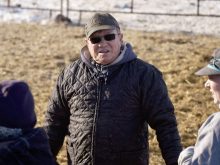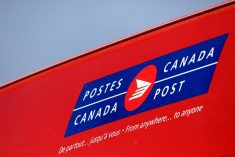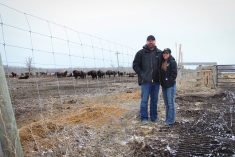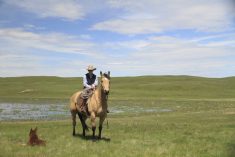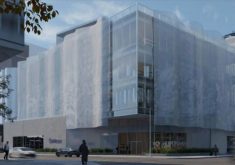This story has been reposted in recognition of the National Day for Truth and Reconciliation on Sept. 30. For more stories of Indigenous farming, food sovereignty, challenges and triumphs in the ongoing work of reconciliation, see our Truth and Reconciliation landing page.
Indigenous people and settlers gathered July 6 at Brenda Bohmer’s grain farm near Bawlf, Alta., to celebrate the opening of the Treaty Land Sharing Network in Alberta.
It marked expansion of the network from Saskatchewan into the western part of Treaty 6, also known as central Alberta.
Read Also
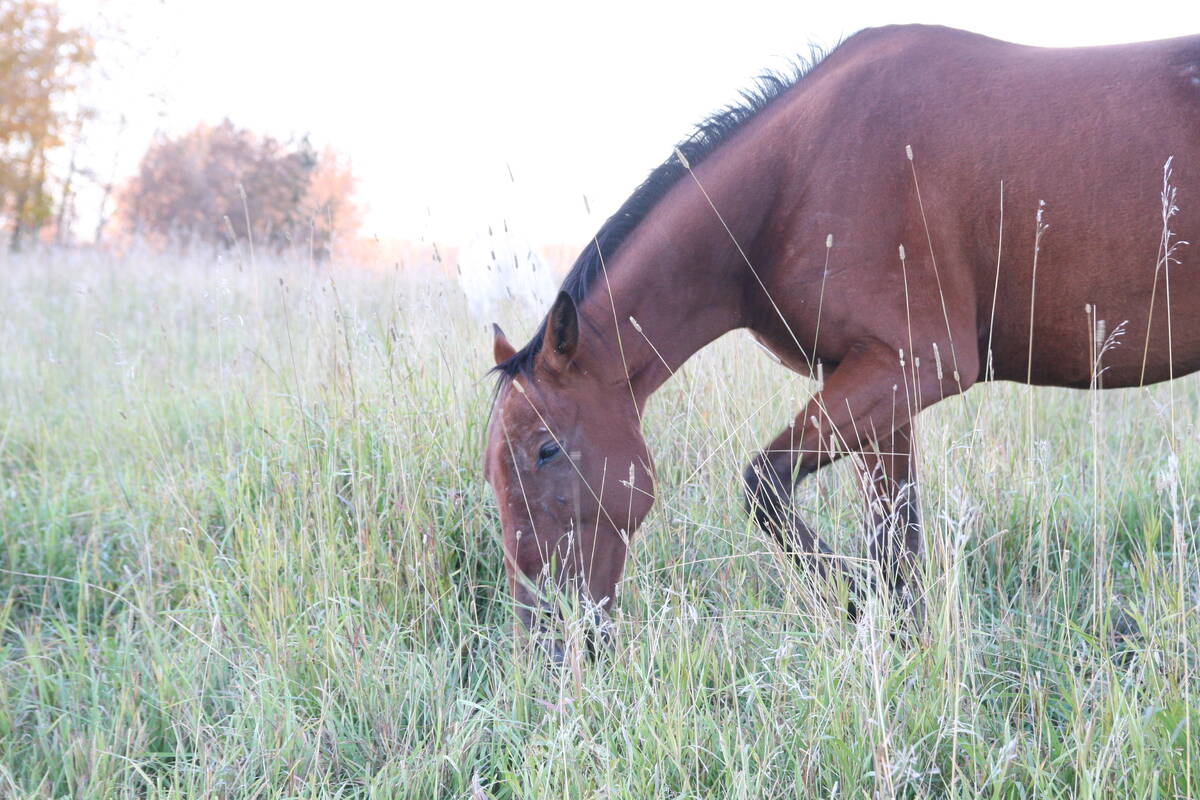
Beware giving horses too much iron
Horses consuming too much iron through diet or well water risk health problems like laminitis. Mineral testing forage and water is good practice for owners.
“Many people, especially those of us who are settlers or who come from settler backgrounds, have benefited a lot from treaties, and now it’s time to make sure that we move in a more equitable direction,” said Bob Montgomery, a Métis hunter and master of ceremonies for the event, which attracted about 80 people to Bohmer’s 640-acre farm.

The land sharing network is a grassroots collective of farmers, ranchers and other landholders who have come together to honour treaties. Members provide access to their land for Métis and First Nations people to gather medicinal plants, hold ceremonies or hunt.
Bohmer is the first Albertan to join the network.
The day began with a pipe ceremony led by elders Bert Bull from Louis Bull Tribe and Alsena White from Saddle Lake Cree Nation. Bull sang a flag song as the Treaty Six flag was raised.

Bohmer, a third-generation farmer, talked about the location of her farm on traditional lands of the Saulteaux, Nakota Sioux, Dene, Blackfoot and Métis people.
“It’s so special for me to host this launch event for the Alberta Treaty Land Sharing Network,” she said.
She left the farm for 20 years but returned to full-time farming in 1997.
“It wasn’t until I started to think about my own retirement that my perspective started to shift. I began to realize and acknowledge the strong connection I have with the land, and land is sacred to me.
“It was a gift, and the land has provided a wonderful life and supported my family for three generations. Now I see myself as a landholder and a caretaker of the land.”
She learned about the network by reading an article in The Western Producer.
Amy Seesaquasis, from Beardy’s and Okemasis’ Cree nation in Saskatchewan, provided some network history. She was joined by Shirley Wolfe-Keller, a knowledge keeper from Muskowekan and Fishing Lake First Nations in Saskatchewan.

Seesaquasis talked about Indigenous nations as matriarchal societies destroyed by colonization. The land sharing network was built by a matriarchy.
“It was started by a collective of women and that’s important. It was started by settler women, who started the vision for this and reached community including myself and Kokum (grandmother) Shirley,” she said.
The network began in 2018 when Valerie Zink, who has ties to Regina and a farm east of Calgary, spoke to an Indigenous hunter from Peepeekisis Cree Nation in Saskatchewan about access to land for Indigenous people, said Seesaquasis.
Other women joined the conversations. When COVID-19 shut things down, the women including Zink, Martha Robbins, Emily Eaton, Mary Smillie, Naomi Beingessner and Hillary Aitken, reached out to Seesaquasis and they began meeting on Zoom.
All the settler women came from generations of farming and knew the land had once belonged to Indigenous people, said Seesaquasis. Their families had displaced Indigenous people, who lost access to traditional territories.
Seesaquasis said development of the network was fuelled by the shooting and killing of Colten Boushie, an Indigenous man from the Cree Red Pheasant Nation. In 2016, Boushie and several friends stopped on land owned by Gerard Stanley near Biggar, Sask. Boushie was shot and killed by Stanley, who went to trial in 2018 and was found not guilty by an all-white jury.
Seesaquasis said the decision in the Boushie case proved to Indigenous people that it was not safe for them to be on the land. The Saskatchewan government subsequently changed the rules about trespassing.
Zink said the settler women started meeting with individual farmers to talk about a treaty land sharing network.
“There was a lot of interest. We had more conversations among individual landowners to build an initial base to launch the network,” said Zink.
The women met with groups of Indigenous land users and connected with the Treaty 4 governance centre in Fort Qu’appelle, Sask.. They developed a relationship with the Anishinabe nation treaty authority and partnered with the Federation of Sovereign Indigenous Nations.
In summer 2020, the women hosted a land sharing event on Mary Smillie’s farm near Bladworth, Sask. It was magical, said Seesaquasis.
In summer 2021, the network held an official launch and opened Smillie’s land to Indigenous people. There are now 57 landowners in the network in Saskatchewan, covering about 37,000 acres.
In fall 2021, the women who started the network met with a group from Alberta and several people joined the coordinating committee.
“It’s a first step towards treaty implementation,” said Zink. “It is something concrete that people can do beyond learning and conversing. Being a part of the network is a commitment to ongoing learning, education and challenging yourself. But I think there’s also a real desire to do something that has a real impact.”
Josh Littlechild, a hunter from Ermineskin Cree Nation, embraced the recent Alberta event.
“This is the type of reconciliation and action that’s required and needed to make this change that we want to see this country Canada become in this age of reconciliation,” he said. “And a part of my core memory is going to be watching reconciliation happen way out here in Bawlf.”
Doyle Wiebe, a fourth-generation farmer from Langham, Sask., and member of the network, said he grew up with little connection to Indigenous people and issues. As he became aware of the injustices, he read about the network. He knew Mary Smillie and her husband, Ian McCreary, and learned more from them.

“As far as posting the sign on one of my pieces of land, I think that’s the best way of meeting some of the things that Indigenous people might want to come on the land for, whether it’s hunting or gathering different type of plants for different reasons,” he said.
Allowing Indigenous people on his land allows him to acknowledge the wrongs done to Indigenous people, he added.
“Life is too short to let opportunities like this go by where we can acknowledge the wrongs of the past, to accept that there were wrongs that we are responsible for, not in the sense of we did the wrong, but that we’re responsible for making it right if we can.”
Signage now denotes Bohmer’s farm as part of the Alberta Land Treaty Land Sharing Network.
“This is the beginning of something, and the possibilities that it could lead to are important,” said Bohmer. “It’s a step towards reconciliation.”
-Updated Sept. 24, 2024. Corrects name of Federation of Sovereign Indigenous Nations.




